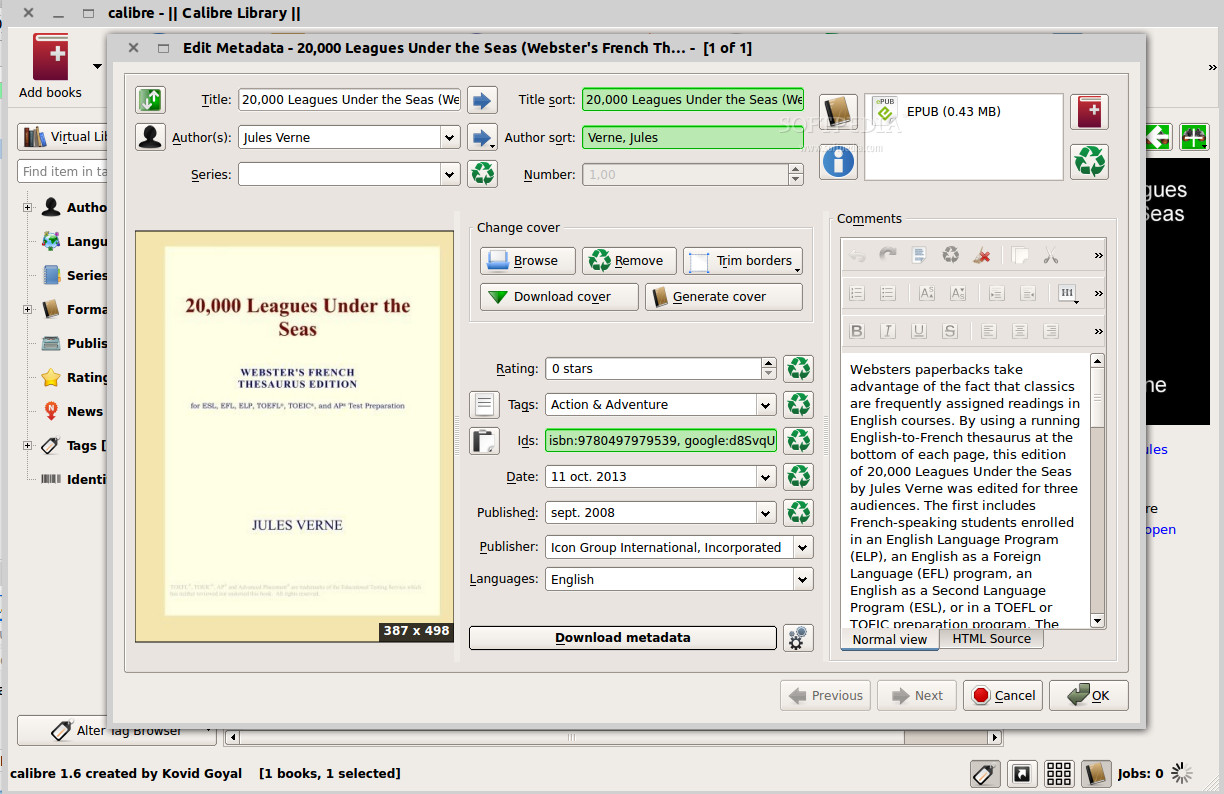

Choose Save to Disk > Save Only MOBI Format to Disk. On the left side of the Calibre window click on Formats to reveal the format entries below. My guess is that you’ll want these separated so that you know which you can copy to your Kindle and which will work within iBooks. In the Finder navigate to the library folder you created and within it you’ll find all your ebooks organized in folders by author’s first name.īut suppose you’ve imported multiple ebook formats and they’re all sitting in your library. The cure for last name/first name author entries.Įxport your books: After cleaning up your books you could stop right here. Your selected titles should now display authors in First Name/Last Name format.
:max_bytes(150000):strip_icc()/kindle-update-1560728_1920-400773d7b5a24bd28089ebc2b8068d70.jpg)
When you do this, the Test Result field should read Charles Dickens, indicating that your other settings are correct. Below, in the Test Text area, enter Dickens, Charles in the Your Test field. In the Replace With field enter 2 1 (with a space between 2 and 1). In the Search For field enter (.*), (.*).

From the Search Field pop-up menu choose Authors. From the Search Mode pop-up menu choose Regular Expression. Press the E key to produce the Edit Meta Information window and click the Search and Replace tab. Press Return and you’ll see a list of just those books whose authors use this Last Name, First Name scheme. In the Search field, enter author:, (author-colon-comma). This technique that I picked from user “Garcie” in the MobileRead forum. While you can scroll down your library list, seek out these errant entries, and manually correct them, I’d instead suggest The duplicates will disappear.įurther cleanup: Despite better metadata, it’s possible that you still face author names presented as Dickens, Charles. Command-click any additional copies of the book (leave one unchecked so that you don’t delete the original) and then click on Remove Books in the toolbar. A list of books that are duplicated will appear. Click on it and in the window that appears choose Fuzzy under both the Title Matching and Author Matching headings and click OK. Once restarted, Calibre will display a Find Duplicates entry in the toolbar. Selecting Fuzzy gives you the best chance of finding the greatest number of duplicate ebooks. Instead of Dickens, Charles-which is sorted under C rather than D-you should see Charles Dickens. Hopefully, title and author information will be cleaned up as well. For example, you’ll probably see more entries under Publisher than before. When you do this you’ll find that your library contains more information than it once did. After downloading new metadata choose to attach it to your ebooks. Once the process is complete you’ll be asked if you’d like to replace your books’ metadata. This can take a long time if you have a large library. Calibre will go online and try to track down the most appropriate metadata for the books in your library, including cover art.
#Calibre ebook reader ios download
In order to do that, select all the books in your library and choose Edit Metadata > Download Metadata And Covers. Those books will be imported into Calibre’s library.Ĭleaning up the metadata: You can clear up a lot of your problems simply by attaching better metadata-information such as author, title, genre, and year of publication, for example-to your books. Click on the first book in the resulting list, hold down the Shift key, and then click on the list’s last book. If you’ve created those smart folders I suggested, you can do this by choosing Add Books > Add Books From a Single Directory and in the sheet that appears, select the appropriate smart folder from the sidebar. Importing your books: Now let’s get your books into Calibre. Choosing a device type in the Calibre setup wizard. Then click Finish in the next window and the Calibre library window appears. If you have an iOS device, click on Apple. If you have a Kindle or want to use the Kindle iOS app, choose Amazon. When you click Next in the setup wizard you’ll be asked to choose the kind of device you’re using. By default the library is called Calibre Library and is placed within your user folder, but you can change that location if you like. When you first launch Calibre it will prompt you to do that. Create a library: You’ll want to start by creating a folder for your books.


 0 kommentar(er)
0 kommentar(er)
